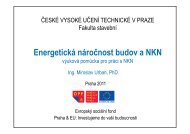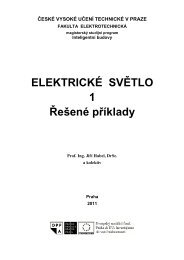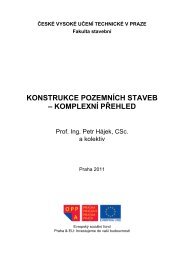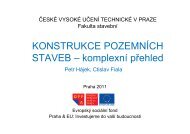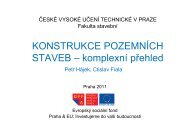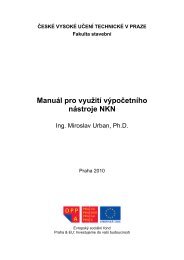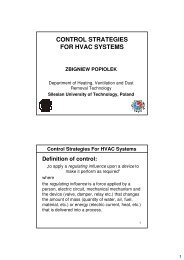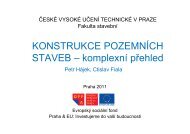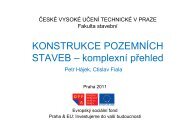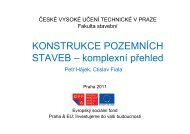Buses, Protocols and Systems for Home and Building Automation
Buses, Protocols and Systems for Home and Building Automation
Buses, Protocols and Systems for Home and Building Automation
You also want an ePaper? Increase the reach of your titles
YUMPU automatically turns print PDFs into web optimized ePapers that Google loves.
Evropský sociální fond. Praha & EU: Investujeme do vaší budoucnosti.<br />
important usage of the BACnet is an interconnection of incompatible building automation<br />
systems <strong>and</strong> components.<br />
First of disadvantages of the BACnet is that there exists no common configuration tool (in<br />
opposite to KNX <strong>for</strong> example). There<strong>for</strong>e almost every producer has to develop his own new<br />
tool <strong>for</strong> its devices. Another big problem with BACnet in recent history was that some<br />
BACnet products were not 100% compliant, so the interoperability of the devices was not as<br />
good as it should be. This problem was the reason of founding of BACnet Testing<br />
Laboratories (BTL).<br />
Today, BACnet is supported in devices of more than 500 companies <strong>and</strong> also universities<br />
(February 2011: 191 vendor ids in the USA, 59 in Germany, 4 in the Czech Republic) including<br />
Siemens, Honeywell, Hyundai, Mitsubishi, ABB, WAGO, DOMAT Control systems or Teco<br />
Kolín.<br />
Further reading:<br />
(8) (9) (11) (12)<br />
3.1.2. Konnexbus<br />
Fig. 3.1.2.1: KNX (13)<br />
Konnexbus (KNX) is the main building automation system (not only) in Europe. Eighty<br />
percent of companies on the market offer devices, which are capable to be connected into a<br />
KNX network. KNX is also known by its older name EIB Instabus. EIB is one of three older<br />
independent European building automation systems which were joined together in the year<br />
2001 to create a new system called KNX. The other systems were EHS <strong>and</strong> BatiBus <strong>and</strong> a<br />
backward compatibility to these older systems is provided. Konnexbus is covered by five<br />
st<strong>and</strong>ards today:<br />
- ISO/IEC 14543-3<br />
- CSA-ISO/IEC 14543-3 (Canada)<br />
- CENELEC EN 50090 (Europe)<br />
- CEN EN 13321-1 (Europe)<br />
- GB/Z 20965 (China)<br />
The KNX system is a typical example of a fully decentralized complex home <strong>and</strong> building<br />
automation system – every device has its own “intelligence” <strong>and</strong> knows what to<br />
receive/send from/to the bus <strong>and</strong> how to process the received data.<br />
As is usual in the case of st<strong>and</strong>ardized protocols, there exists an association (KNX association<br />
(13)) which cares about everything around the protocol – organizes a scientific conference<br />
every year, users meetings, trainings, publishes its own journal, develops <strong>and</strong> produces<br />
software <strong>for</strong> the users <strong>and</strong> manufactures... The KNX association has nowadays more than<br />
220 members including companies ABB, Gira, Schneider, Wago, Hager, Siemens, Buderus,<br />
Viessman, Somphy, Bosch or Toschiba. There also exist more than 30000 installer companies<br />
in 100 countries <strong>and</strong> 150 training centers all over the world. Strong academic research is<br />
very important <strong>for</strong> the KNX – the scientific club of the Konnexbus comprises about 60<br />
universities (<strong>for</strong> example prof. Kastner in TU Wien). These facts imply that customers can<br />
Ondřej Nývlt - <strong>Buses</strong>, <strong>Protocols</strong> <strong>and</strong> <strong>Systems</strong> <strong>for</strong> <strong>Home</strong> <strong>and</strong> <strong>Building</strong> <strong>Automation</strong> 14




